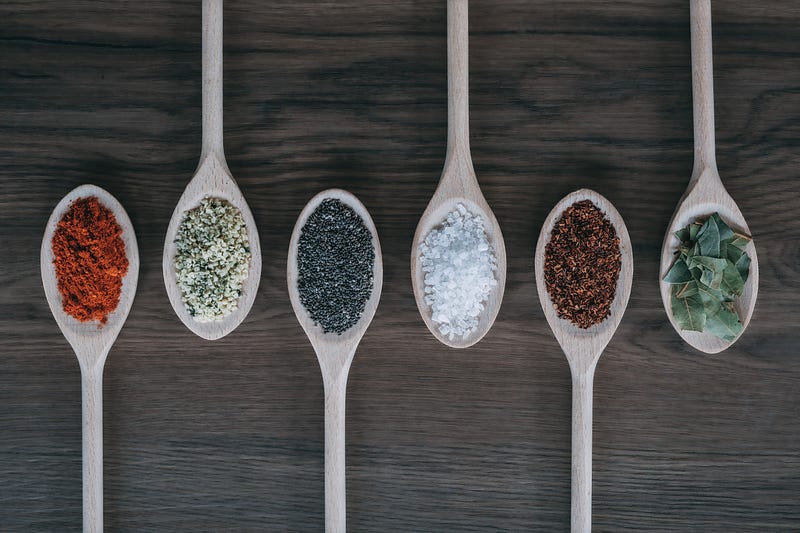How to Reduce Sodium in Your Diet While Enhancing Flavor
Written on
Chapter 1: Understanding Sodium Consumption
Sodium plays a crucial role in our diet, but many individuals exceed the recommended intake.
There are many factors that contribute to our sodium consumption, and being mindful of it is essential for overall health.
Section 1.1: The Importance of Sodium
While sodium is necessary, excessive consumption can lead to serious health issues. For example, I’ve never been fond of salt in large quantities; I can easily detect when a dish contains more than my preference. My approach to meal prep revolves around balancing herbs and spices with just the right amount of salt to enhance flavor without overwhelming the dish.
If you frequently purchase pre-packaged meals, be aware that they often contain high levels of salt and sugar. Thus, it's vital to read labels carefully and make informed choices to safeguard your health.
Subsection 1.1.1: A Personal Experience

My mother battled hypertension for years and rarely added salt to our meals. It wasn’t until I moved out that I began to incorporate salt into my cooking. However, my aversion to excessive salt remained, especially considering my family’s history of kidney disease. Following my mother’s passing due to renal failure, we focused on reducing her salt and protein intake to improve her quality of life. This experience serves as a reminder to stay vigilant about salt intake, particularly if you have health concerns or a family history of related issues.
Section 1.2: Sodium Intake Statistics
A staggering 90% of Americans consume too much sodium, leading to hypertension and an increased risk of heart disease and stroke. On average, individuals require approximately 450 milligrams of sodium daily, with recommended limits set at 2,300 mg or 1,500 mg for those at risk of hypertension. Alarmingly, many people consume between 3,000 and 3,500 mg daily, significantly exceeding these recommendations. Common sources of excess sodium include cured meats, breads, cheeses, soups, pre-packaged meals, and desserts.
Chapter 2: Strategies for Reducing Sodium
Research highlights five primary strategies to help manufacturers reduce sodium levels in foods. One approach is to decrease or eliminate salt in recipes, although complete removal may not always be feasible due to salt's role in dough rising and meat preservation. Alternatives like potassium chloride or calcium chloride can be used, but they may produce a bitter taste and require balancing with other flavors.
How to Reduce Sodium Without Much Effort
Taking control of your sodium intake can be simpler than you think. Here are some practical strategies:
- Gradually Reduce Salt Intake: Transitioning to a lower salt diet can be achieved by slowly cutting back on processed foods and reducing salt in your meals, much like reducing sugar intake.
- Cook at Home: Preparing meals from scratch allows you to manage the salt content. Be mindful, however, that cooking can sometimes intensify salt's effects, leading to overconsumption.
- Opt for Low-Sodium Options: If you’re pressed for time and need to buy food, choose low-sodium varieties of your favorite products. For instance, I often use low-sodium tomato paste in my recipes.
- Use Himalayan Salt: This alternative not only has less sodium than table salt but also offers more flavor and essential minerals. Just ensure you choose a pure source to avoid contaminants.
- Incorporate More Herbs and Spices: Fresh and dried herbs can significantly reduce the need for salt. Just be cautious, as some manufacturers may include sodium in their seasoning blends.
- Choose Fresh Ingredients: Whenever possible, select fresh proteins and vegetables over canned or frozen varieties, which may contain added salt.
It's essential to monitor your sodium levels, particularly if you're practicing intermittent fasting, as this can lead to decreased salt intake. Symptoms of low sodium can mimic those of hyperglycemia, so staying hydrated and occasionally adding a pinch of Himalayan salt to your water can help.
For more insights like this or to start sharing your own experiences, consider signing up through my link. I'd love to see you there!